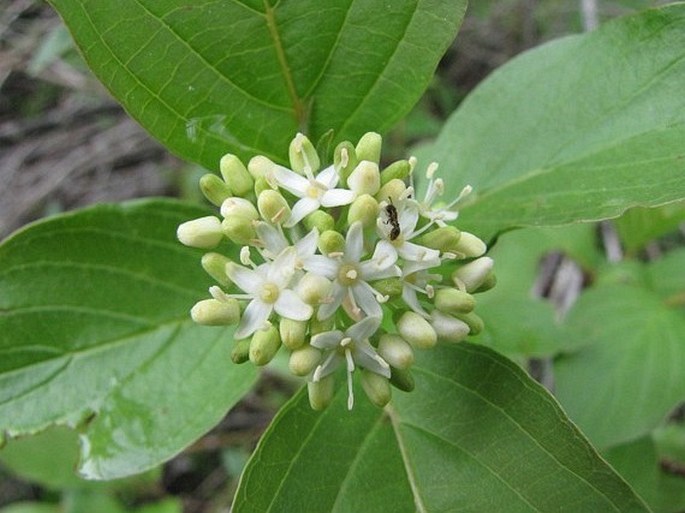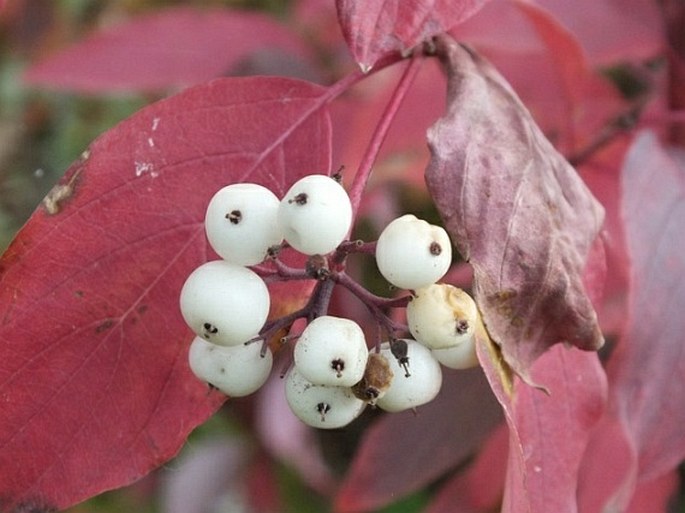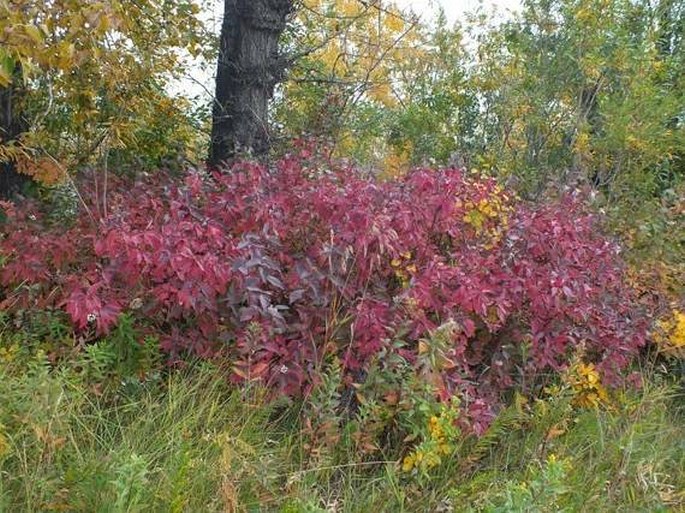Syn.: Cornus stolonifera Michx., Swida stolonifera (Michx.) Rydb., Swida sericea (L. emend. Murray) Holub, Cornus alba subsp. stolonifera (Michx.) Wangerin
Family: Cornaceae Bercht. et J. Presl

Distribution: Most of North America, from Alaska to California, absent in extreme south east of the continent, where it is replaced mostly by Cornus florida.
Ecology: Riverbanks, moist woods and meadows, plains to montane. Blooms in June and July.
Description: Deciduous shrub, erect to spreading, 1–3 m tall. Bark bright red, sometimes purplish or green, lower branches rooting, when touching soil. Leaves opposite, oval to lanceolate, 2–10 cm long, petiolate, 5–7 prominent, parallel veins converging at tip, dark green, light green below, red in the fall, margins smooth. Inflorecence is a terminal, flat topped cyme, 2–6 cm across; flowers white to yellowish, about 5 mm across, tetramerous, corolla opening flat, stamens erect, white anthers. Fruit is a berry-like drupe, white or tinged with blue, 4–7 mm, juicy, flattened seeds, inedible.
Note: Although the berries are too bitter for modern tastes, native tribes collected them for food and mixed them with sweeter kinds. Soft, white, inner bark was dried for smoking, either alone or mixed with tobacco or kinnikinnick (Arctostaphylos uva-ursi). The flexible branches were used for basket weaving. Important plant for wildlife food for moose and deer and birds and bears feed on the bitter berries. For its colourful branches and fall red colour of the leaves, it became an favourite shrub for gardening and parks all over the globe.




These images were taken in Canada, Alberta, Calgary, Beaverdam Flats Park (spring and fall 2014).


